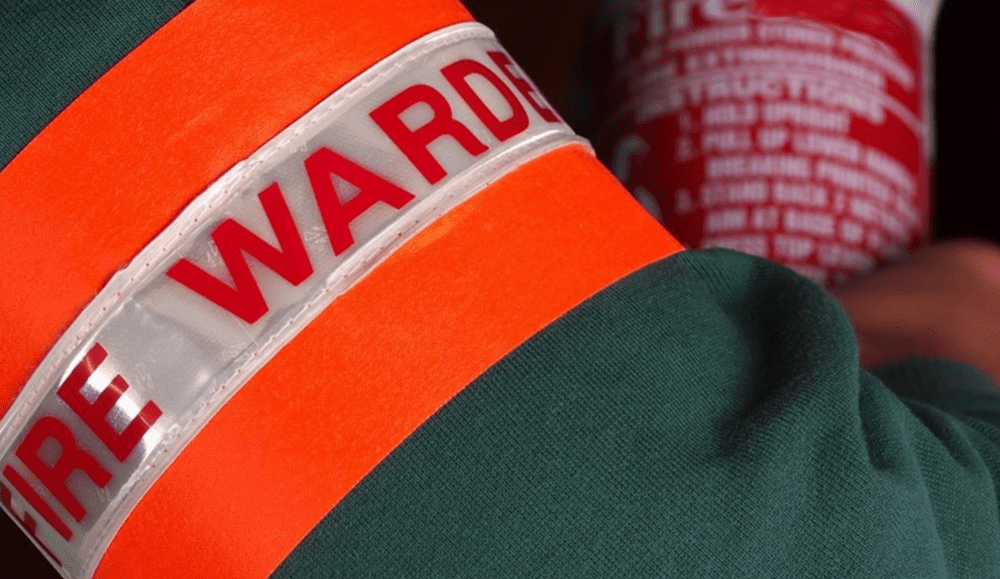Using Automist as an Intelligent Alternative to a Waking Watch Patrol
Why install Automist® fire Suppression systems rather than employ a Waking Watch patrol?
- There is only an upfront installation cost for Automist® fire suppression systems. After installation, annual maintenance is the only ongoing cost.
- Detecting smoke allows Automist® fire suppression systems to detect a fire earlier than traditional fire suppression systems. After Automist® detects smoke, it will scan the room to determine if there’s a fire.
- The smoke detection feature of Automist® allows it to detect fires earlier and apply water mist directly to the fire, preventing its growth and suppressing or extinguishing it.
- Automist® fire suppression systems have the option of an alarm output, meaning as soon as the smallest of fire has been verified, the fire alarm will sound. Automist® will be applying water mist directly to the fire whilst the building is being evacuated.
- Wireless smoke detectors are also available for faster installation.
- The performance of Automist® has been rigorously tested in laboratories to ensure it can handle even the most challenging fires. Including fires caused by undercounter white goods, cooking oil/chip pan fires and concealed fires.
- Automist® fire suppression systems eliminate both the errors of the waking watch and the risk of the person or people detecting the fire.
- One Automist® pump can supply up to six Automist® spray heads, so there is an option perfectly suited to your building and situation. Learn more about Automist® fire suppression systems here. Would you like more information or a demonstration? Contact us, we can help you find the most suitable fire suppression solution for your building.
- Automist® can be installed and commissioned to a single dwelling at a time, minimising disruption to residents.
The cost of employing a Waking Watch can exceed the average cost of installing a fire suppression system in as little as eight months.
Why is a waking watch required in my building?
When a building’s evacuation policy has changed from a stay put to a simultaneous evacuation policy due to unsafe cladding or fire safety issues, a waking watch is required. Fire marshals are required to patrol the building 24 hours a day looking for signs of fire.
What is a waking watch?
The waking watch is defined as “a system in which staff continuously patrol all floors and the exterior perimeter of a building to respond to a fire, assist in calling the fire service, and assist with the evacuation of building occupants”.
A waking watch marshal is tasked with alerting all occupants of a fire requiring evacuation within 15 minutes of discovery. In the absence of a fire alarm, this can be accomplished either by activating a manual alarm or by knocking on doors and sounding an air horn.
After Grenfell, buildings clad with similarly dangerous cladding were subjected to 24-hour security patrols. In October 2017, the National Fire Chiefs Council published guidelines for buildings requiring changes in their evacuation policies from stay put to simultaneous evacuation due to fire safety deficiencies.
According to NFCC guidance, this “Waking watch is likely to be the least reliable and most resource-intensive safety measure, and may not be suitable for high-risk situations”. In addition, it says that it is “unpractical for a long-term solution and should only be used temporarily”.
Security agencies provide waking watches to building owners, charging a fee for the 24-hour service.
What is the cost of a waking watch?
The cost of waking watches can be considerable, and leaseholders often cover the costs through their service charges.
Each watcher is estimated to cost £13.99 per hour, or £11,361 per month, according to the government estimates. We have seen cases where these costs exceed £50,000.
According to NFCC guidelines, waking watches are not feasible for a long-term solution and should only be considered as a short-term measure. However, some buildings have been using them for more than three years.
Read more about high rise fire safety issues in Birmingham.
Insurance companies or the fire service have in some cases required them to remain in place after the installation of a fire alarm.
Residential buildings’ Responsible Persons are encouraged to speak with their local Fire & Rescue Services, obtain a Fire Risk Assessment if they have not already done so, and/or contact a specialist fire suppression company in order to discuss the options for the building.
Read the Birmingham Mail article on Waking watch costs at Centenary Plaza.
Would you like to discuss your options?
Call us on 0116 3400516
Contact us for more details of what we can do to install your Automist® fire suppression systems.
